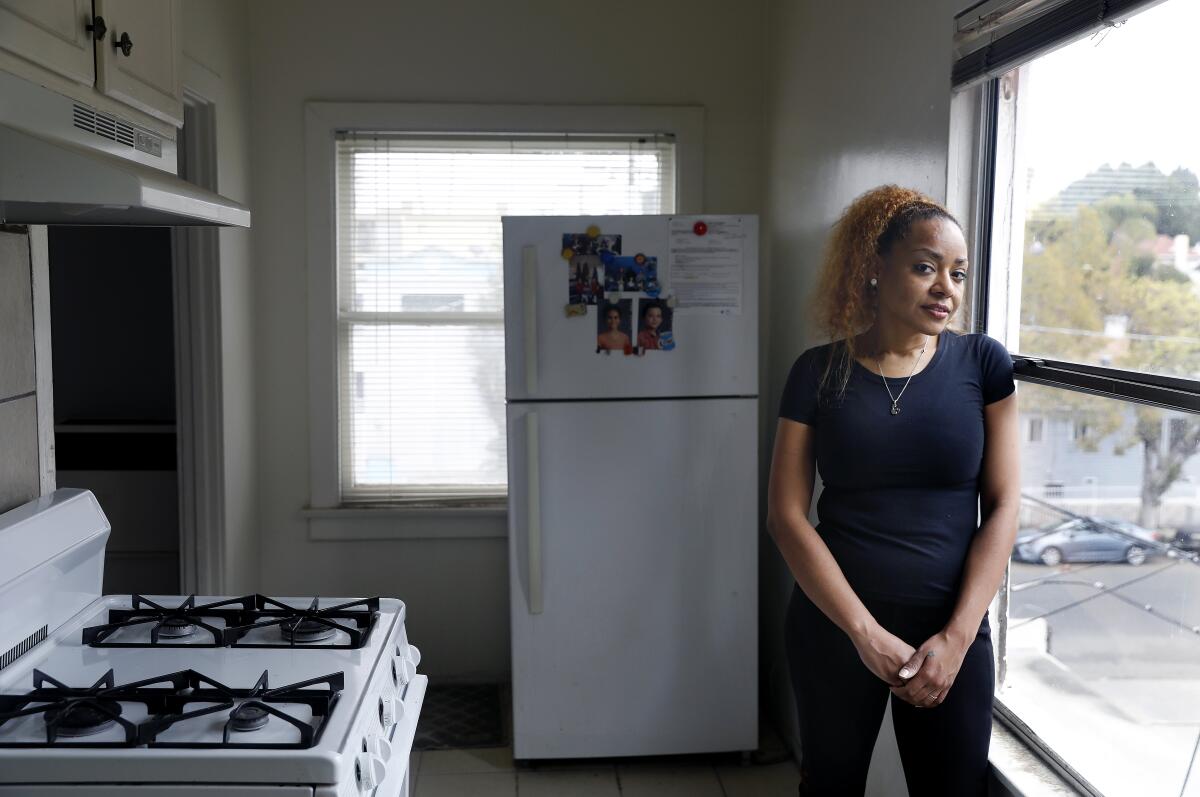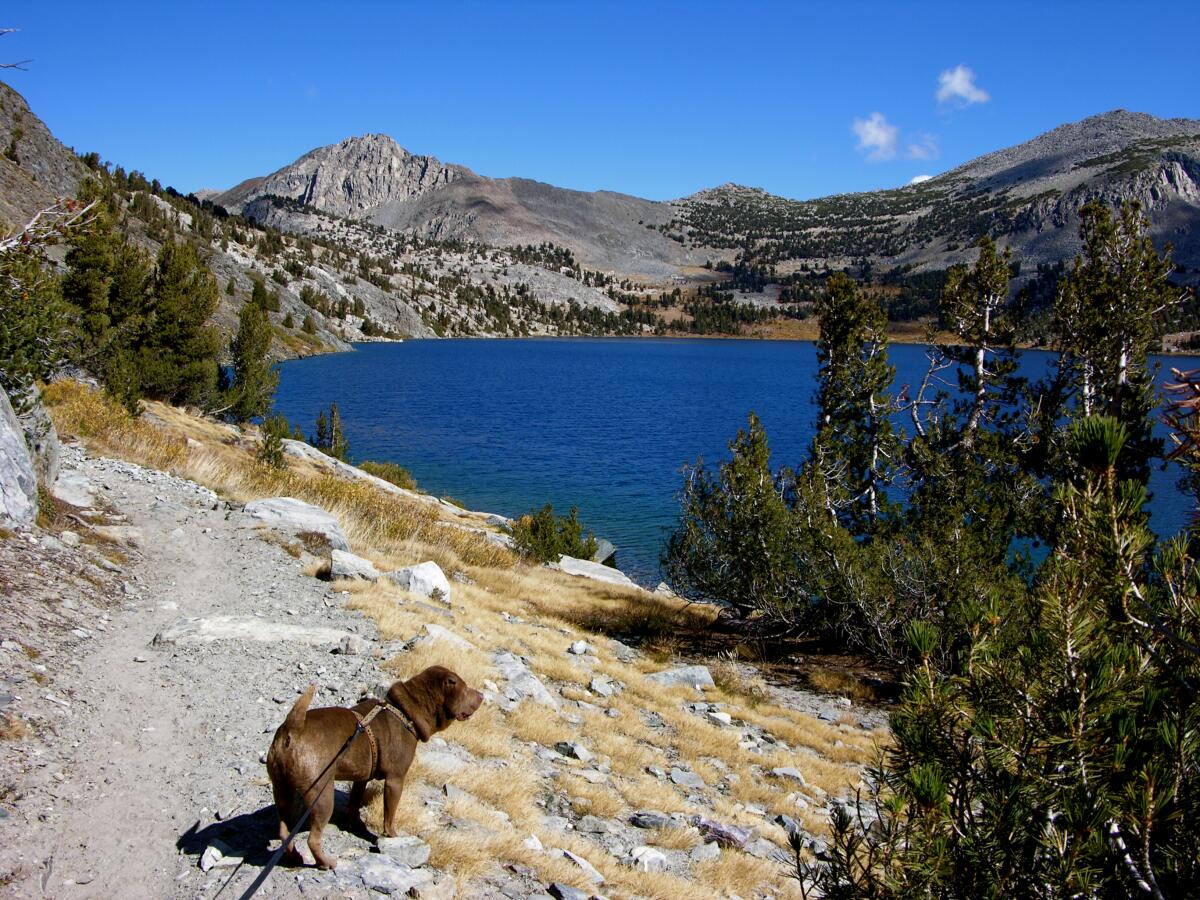What one woman’s eviction case shows about the challenges L.A. County renters face

Good morning, and welcome to the Essential California newsletter. It’s Thursday, March 9.
As pandemic-era renter protections wane, the number of eviction cases is rising back to pre-COVID levels in L.A. County.
For many renters facing eviction, navigating the protections at various levels of government has been challenging.
Times reporter Paloma Esquivel covers housing and recently spent a lot of time in eviction court, seeking “to put a face on some of these policy decisions.”
“One thing I realized in reporting the story, and also trying to better understand this beat is this stuff is difficult even for lawyers and experts to understand,” she told me this week.
Paloma spent “day after day” in court, where hearings are rapid-fire. She writes in a story published Wednesday:
Once they’re filed, eviction cases move quickly compared with the typically sluggish pace of civil court — at times they are decided in a 10-minute trial before a judge. Renters rarely have lawyers, while landlords almost always do.
In one courtroom alone, about two dozen eviction cases went through in a single day.
“You really get the sense [that], so much is on the line,” Paloma told me. “For a lot of people, it’s their homes ... it’s just this really crucial moment in their lives.”
That’s where Paloma first saw Leticia Graham, who was fighting to stay in her Westlake studio apartment, where she’s behind on rent by a couple of months.
Graham appeared for her scheduled case remotely. But she was supposed to be there in person. The judge told her to get to Stanley Mosk Courthouse before noon to plead her case.
The 36-year-old, who doesn’t own a car, raced to a local bus stop, carrying a backpack stuffed with receipts and bank records. She made it in time, but quickly learned that pandemic-era protections aren’t as protective as many renters assume.
“Day after day, tenants show up in court with a false impression of how the system works,” Paloma reports. “Some, like Graham, believe that pandemic-era renter protections will keep them from being locked out of their homes.”
But that’s not true, because the eviction protections don’t actually bar landlords from taking tenants they want to evict to court. Paloma explains:
The moratorium simply gives tenants a defense to use when a case is filed. To take advantage, they need to understand how to navigate the court system and properly present evidence on their own behalf. Graham, like most of the renters in court without lawyers, didn’t know any of that.
Graham was seeking to stay in the apartment until July — while paying rent — which she said would give her enough time to get back on her feet and have enough saved to find a new place to live. Being forced out before then would leave her homeless, she said.
Paloma stayed in court and that same day connected with Graham, who was open to speaking and being shadowed by a reporter and photographer.
“[Graham] understood that telling her story might be of service to other people who are trying to navigate the system,” she added.
Before the pandemic, Graham had gotten her real estate license and was figuring out the business. Then came COVID and the lockdowns, shuttering open houses and her hopes for a career in the industry. She told Paloma that the isolation early on in the pandemic led to spiraling depression.
Graham was able to reach a resolution with her landlord and told Paloma she’s feeling confident and focusing on the fact that she survived what the pandemic threw at her.
“We’ve been through the fire now,” she told Paloma. “Let’s get to something better.”
You can read Paloma’s reporting and learn more about what happened in Graham’s case here.
And now, here’s what’s happening across California:
Note: Some of the sites we link to may limit the number of stories you can access without subscribing.
Check out "The Times" podcast for essential news and more
These days, waking up to current events can be, well, daunting. If you’re seeking a more balanced news diet, “The Times” podcast is for you. Gustavo Arellano, along with a diverse set of reporters from the award-winning L.A. Times newsroom, delivers the most interesting stories from the Los Angeles Times every Monday, Wednesday and Friday. Listen and subscribe wherever you get your podcasts.
POLITICS AND GOVERNMENT
There’s a new push to guarantee Californians the right to housing. Assemblymember Matt Haney (D-San Francisco) wants voters to decide on an amendment to the state’s Constitution, saying California is failing to address the housing crisis. Sacramento Bee
Does California’s superintendent have enough power? Assemblymember Kevin McCarty (D-Sacramento) says the pandemic showed the limited authority of the role, which he called “nothing more than an education cheerleader.” McCarty’s new bill seeks to change the voter-elected position to one appointed by the governor. Los Angeles Times
San Bernardino County officials report 12 people have died in mountain communities following the severe snowstorms that stranded residents for days. Some fear additional bodies will be discovered as more snow is cleared. Los Angeles Times

Support our journalism
HEALTH AND THE ENVIRONMENT
L.A. residents who drive less are breathing in more car pollution than automobile-centric commuters, according to a new study. USC researchers analyzed data by census tract — each containing about 4,000 residents — and found that wealthier, whiter areas are effectively exporting air pollution to the Black and Latino neighborhoods they drive through on their commutes. Los Angeles Times
Tribal nations and commercial fishing groups say federal mismanagement has further jeopardized the already threatened coho salmon that rely on the Klamath River to spawn. The groups plan to sue the Bureau of Reclamation, claiming the agency violated federal law by not sending enough water south through the river from Upper Klamath Lake in Oregon. KQED
Gov. Gavin Newsom’s proposed state budget cuts would slash funding for coastal resilience projects by almost half. That’s worrying legislators and leaders in coastal cities looking to protect communities from rising sea levels. CalMatters
CALIFORNIA CULTURE
Japanese food is a staple of the Bay Area and there’s an eclectic scene to explore beyond the standard sushi fare. Check out the San Francisco Chronicle’s guide to the best places to chow down on izakaya, ramen and much more. San Francisco Chronicle
Maybe you’ve noticed an atypical amount of castles in the realm of Burbank. Times audience engagement editor Rachel Schnalzer did some moat-worthy digging to learn about the history of the medieval-minded infrastructure. Los Angeles Times
Free online games
Get our free daily crossword puzzle, sudoku, word search and arcade games in our new game center at latimes.com/games.
AND FINALLY
Today’s California landmark comes from Sandy Marschman of San Diego: the grand views of the Sierra Nevada along Duck Lake Pass Trail.

Sandy writes:
We love hiking the mountains in California. Duck Lake Pass Trail and the view from the top is the epitome of the Sierra Nevada range. [With] a 10-mile round trip and elevation gain of about 2,000 feet, it is challenging, but so worth the hike. The elevation at the pass is about 10,000 feet — a perfect place to stop and view the beautiful Sierra Nevada range. This is a special picture as it reminds us of the many hikes we did in the Bishop and Mammoth areas with Niles, our Shar Pei.
What are California’s essential landmarks? Fill out this form to send us your photos of a special spot in California — natural or human-made. Tell us why it’s interesting and what makes it a symbol of life in the Golden State. Please be sure to include only photos taken directly by you. Your submission could be featured in a future edition of the newsletter.
Please let us know what we can do to make this newsletter more useful to you. Send comments to essentialcalifornia@latimes.com.
Sign up for Essential California
The most important California stories and recommendations in your inbox every morning.
You may occasionally receive promotional content from the Los Angeles Times.




